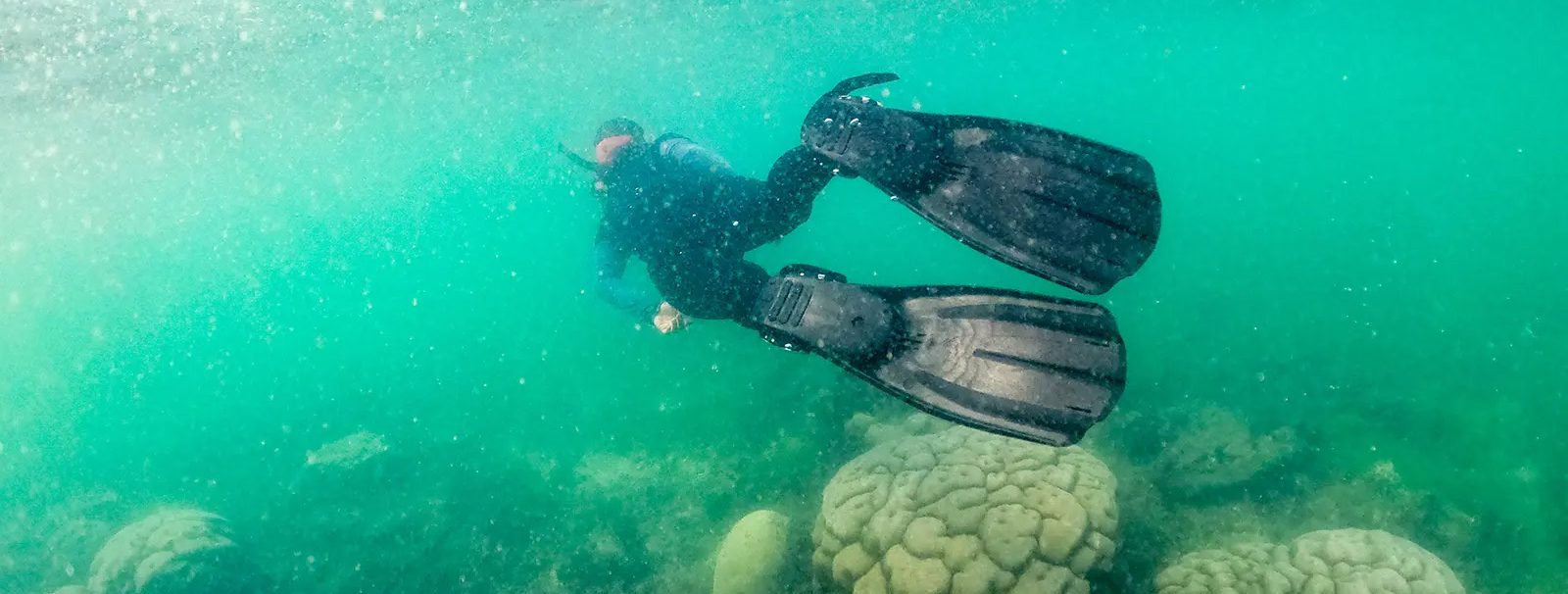AROUND AQUA
TUTICORIN TOWN
Tuticorin is one of the oldest port towns in India, and was the seat of Portugese trading in India in the 16th century. It was once called ‘Pearl City’ because of the pearl fishing that was an integral part of its economy. Today, the coral reefs and lagoons that harboured the pearl-growing oysters are a part of the Gulf of Mannar.
There are 21 islands between the shores of Tuticorin and Rameswaram in the Gulf of Mannar. These islands have been notified as the first Marine Biosphere of India. The Gulf of Mannar Biosphere comprises about 36,000 different species of flora and fauna in a region covered with mangroves, gentle beaches, coral islands and sea grass meadows.
Today, the town of Tuticorin continues its life as a bustling port town with a vibrant, thriving local culture. The Gulf of Mannar too boasts of some of the most beautiful vistas, landscapes and examples of coastal wildlife to be seen in India.
THE GULF OF MANNAR
Aqua Outback is situated on the Gulf of Mannar, a large body of water located between India and Sri Lanka. The region has a rich history that dates back to ancient times. It was an important maritime trade route that connected India with the rest of the world, and it was also a center for pearl fishing.
Today, the Gulf of Mannar is known for its rich biodiversity and is home to several endangered species, including sea turtles and dugongs, as well as coral reefs. In recognition of its unique ecosystem, the Gulf of Mannar was declared a Biosphere Reserve by UNESCO in 1989 (more information available here).
UNESCO describe the Gulf of Mannar as follows: “endowed with three distinct Coastal ecosystems namely coral reef, seagrass bed and mangroves [the Gulf of Mannar] is considered one of the world’s richest region from a marine biodiversity perspective, is known for its unique biological wealth and is a store house of marine diversity of global significance. The Gulf’s 4,223 species of plants and animals representing from primitive to higher forms make it one of the richest coastal regions in India. Most of the islands have luxuriant growth of mangroves on their shorelines and swampy regions. The sea bottom of the inshore area around the islands are carpeted with seagrass beds which serve as ideal feeding ground for Dugong dugon, the endangered herbivorous marine mammal.
Highly productive fringing and patch coral reefs surround the islands and are often referred to as underwater tropical rainforest and treasure house for marine biodiversity, in particular marine ornamental fishes. Occurrence of these specialized ecosystems makes Gulf of Mannar an unique large marine ecosystem in the Indian subcontinent.” The region continues to be an important center for fishing, as well as for tourism and recreation. The Gulf of Mannar is a popular destination for scuba diving, snorkeling, and kitesurfing, attracting visitors from around the world.
SEA LIFE
The Gulf of Mannar is home to a wide range of marine species. The region boasts over 3,600 species of plants and animals, including over 100 species of corals, 25 species of sea grasses, and 900 species of fish. The Gulf’s warm waters and shallow reefs make it an ideal environment for marine life to thrive.
Some of the most common types of fish found in the gulf include barracudas, groupers, snappers, tuna, and mackerel. These fish species play a vital role in the local fishing industry, providing both food and income for the coastal communities that depend on them. In addition, many of these fish are important in maintaining the ecological balance of the gulf’s diverse marine ecosystem.
However, this rich biodiversity is under threat from various environmental factors. Overfishing, pollution, and habitat loss are some of the biggest threats facing the Gulf’s marine ecosystems. Unsustainable fishing practices, such as trawling and dynamite fishing, can damage or destroy coral reefs and seagrass beds, which serve as important habitats and food sources for many species. Pollution from land-based sources, such as sewage and agricultural runoff, can also harm marine life through exposure to toxins and increased sedimentation. Climate change is also having an impact on the Gulf’s ecosystems, through rising sea temperatures, ocean acidification, and sea level rise. Despite these threats, efforts are underway to protect the Gulf of Mannar’s marine life. The region is home to several marine protected areas, which provide a safe haven for species to breed and feed. Additionally, sustainable fishing practices, such as hook-and-line fishing and community-based conservation efforts, are helping to reduce the impact of overfishing on marine ecosystems. By taking these steps, we can help to preserve the Gulf of Mannar’s unique and diverse marine life for future generations.
BIRD SPECIES
The Gulf of Mannar is home to a diverse range of bird species, with over 100 species recorded in the area. Some of the common bird species found in and around the gulf include seagulls, terns, egrets, herons, and kingfishers. The gulf is also an important stopover point for migratory birds that travel between Asia and Australia during the winter months.
Around the Tuticorin region, some of the notable bird species include the painted stork, black-headed ibis, and little cormorant, which can be spotted around the mangroves and lagoons. The region is also home to the threatened Indian skimmer, which is known for its unique feeding behavior where it skims its beak across the surface of the water to catch small fish. Despite the rich diversity of bird species in the Gulf of Mannar, the area faces numerous threats to their habitat, including pollution, overfishing, and coastal development. Efforts are being made to preserve the ecological balance of the area and protect the habitats of the various bird species that call the gulf home.



